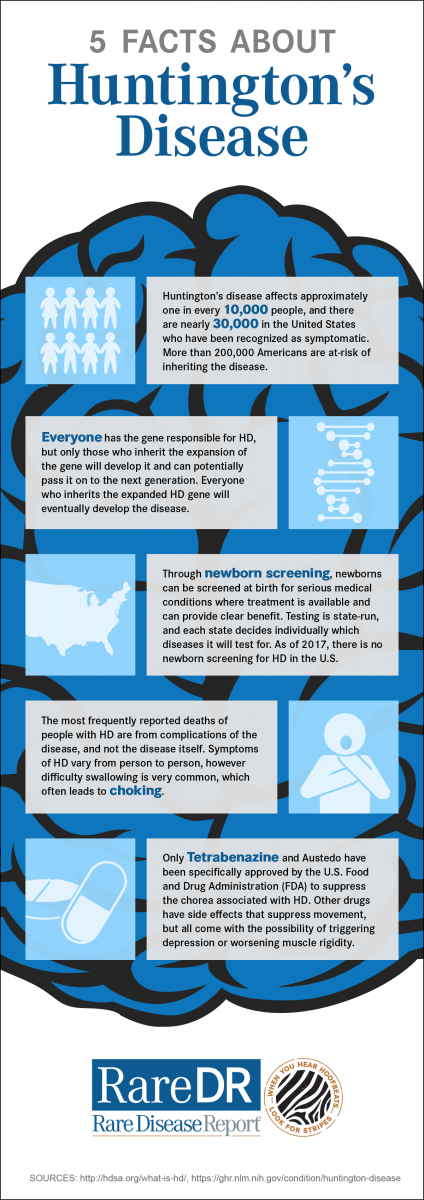Article
Five Facts About: Huntington's Disease [Infographic]
Author(s):
This new infographic from Rare Disease Report provides 5 little-known facts about the Huntington's disease that might not necessarily be covered in news articles.
Huntington's disease (HD) is a life-threatening neurodegenerative disease caused by an unbalanced cytosine-adenine-guanine (CAG) repeat expansion in the Huntingtin gene (HTT), which leads to the production of the toxic huntingtin (mHTT) protein. The mutant mHTT protein progressively destroys neurons in the brain, leading to a rapid decline in neuromuscular and cognitive abilities.

With help from advocacy organizations like the Huntington's Disease Society of America (HDSA), and the leading doctors and scientists dedicating themselves to research of the condition, Rare Disease Report tries to keep its audience at the forefront with the latest news from the HD space. This new infographic provides 5 little-known facts about the condition that might not necessarily be covered in news articles.
- Huntington’s disease affects approximately one in every 10,000 people, and there are nearly 30,000 in the United States who have been recognized as symptomatic. More than 200,000 Americans are at-risk of inheriting the disease.
- Everyone has the gene responsible for HD, but only those who inherit the expansion of the gene will develop it and can potentially pass it on to the next generation. Everyone who inherits the expanded HD gene will eventually develop the disease.
- Through newborn screening, newborns can be screened at birth for serious medical conditions where treatment is available and can provide clear benefit. Testing is state-run, and each state decides individually which diseases it will test for. As of 2017, there is no newborn screening for HD in the U.S.
- The most frequently reported deaths of people with HD are from complications of the disease, and not the disease itself. Symptoms of HD vary from person to person, however difficulty swallowing is very common, which often leads to choking.
- Only Tetrabenazine and Austedo have been specifically approved by the U.S. Food and Drug Administration (FDA) to suppress the chorea associated with HD. Other drugs have side effects that suppress movement, but all come with the possibility of triggering depression or worsening muscle rigidity.
For more information on Huntington's disease and other rare diseases, be sure to follow Rare Disease Report on Facebook and Twitter.





